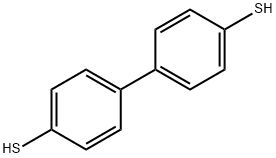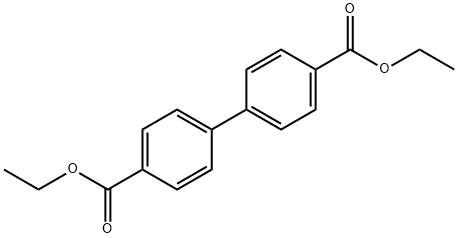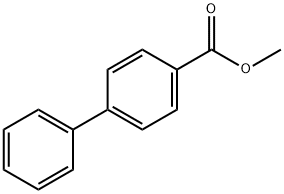4-Biphenylcarbonyl chloride
Synonym(s):4-Phenylbenzoyl chloride
- CAS NO.:14002-51-8
- Empirical Formula: C13H9ClO
- Molecular Weight: 216.66
- MDL number: MFCD00000692
- EINECS: 237-804-8
- SAFETY DATA SHEET (SDS)
- Update Date: 2024-12-18 14:07:02

What is 4-Biphenylcarbonyl chloride?
Chemical properties
4-Biphenylcarbonyl chloride is white to yellow fine crystalline powder
The Uses of 4-Biphenylcarbonyl chloride
Biphenyl-4-carbonyl chloride was used in the preparation of a novel thiourea compound, N-(6-methyl pyridin-2-yl-carbamothioyl)biphenyl-4-carboxamide. It was also used in the preparation of 5-CF3-oxazole analog, 2-{4-[2-(2-biphenyl-4-yl-5-trifluoromethyl-oxazol-4-yl)-ethoxy]-phenoxy}-2-methyl-propionic acid.
What are the applications of Application
Biphenyl-4-carbonyl chloride is used in the preparation of a novel thiourea compound, N-(6-methyl pyridin-2-yl-carbamothioyl)biphenyl-4-carboxamide
Purification Methods
Dissolve the carbonyl chloride in a large volume of pet ether (10 x, b 50-70o), filter it through a short column of neutral alumina, evaporate to dryness in vacuo and recrystallise it from pet ether (b 60-80o). [Beilstein 9 IV 2480.] LACHRYMATORY.
Properties of 4-Biphenylcarbonyl chloride
| Melting point: | 110-112 °C (lit.) |
| Boiling point: | 160 °C / 2mmHg |
| Density | 1.1459 (rough estimate) |
| refractive index | 1.5260 (estimate) |
| storage temp. | Inert atmosphere,Room Temperature |
| form | Fine Crystalline Powder |
| color | White to yellow |
| Water Solubility | HYDROLYSIS |
| Sensitive | Moisture Sensitive/Lachrymatory |
| BRN | 472842 |
| CAS DataBase Reference | 14002-51-8(CAS DataBase Reference) |
| EPA Substance Registry System | [1,1'-Biphenyl]-4-carbonyl chloride (14002-51-8) |
Safety information for 4-Biphenylcarbonyl chloride
| Signal word | Danger |
| Pictogram(s) |
 Corrosion Corrosives GHS05 |
| GHS Hazard Statements |
H314:Skin corrosion/irritation |
| Precautionary Statement Codes |
P260:Do not breathe dust/fume/gas/mist/vapours/spray. P280:Wear protective gloves/protective clothing/eye protection/face protection. P363:Wash contaminated clothing before reuse. P303+P361+P353:IF ON SKIN (or hair): Remove/Take off Immediately all contaminated clothing. Rinse SKIN with water/shower. P305+P351+P338:IF IN EYES: Rinse cautiously with water for several minutes. Remove contact lenses, if present and easy to do. Continuerinsing. |
Computed Descriptors for 4-Biphenylcarbonyl chloride
| InChIKey | JPVUWCPKMYXOKW-UHFFFAOYSA-N |
New Products
4-Fluorophenylacetic acid 4-Methylphenylacetic acid N-Boc-D-alaninol N-BOC-D/L-ALANINOL Tert-butyl bis(2-chloroethyl)carbamate 3-Morpholino-1-(4-nitrophenyl)-5,6-dihydropyridin- 2(1H)-one Furan-2,5-Dicarboxylic Acid Tropic acid S-2-CHLORO PROPIONIC ACID ETHYL ISOCYANOACETATE 2-Bromo-1,3-Bis(Dimethylamino)Trimethinium Hexafluorophosphate (6-METHYL-[1,3]DITHIOLO[4,5-b]QUINOXALIN-2-ONE INDAZOLE-3-CARBOXYLIC ACID 4-IODO BENZOIC ACID (2-Hydroxyphenyl)acetonitrile 4-Bromopyrazole 5,6-Dimethoxyindanone 2-(Cyanocyclohexyl)acetic acid 4-methoxy-3,5-dinitropyridine 2-aminopropyl benzoate hydrochloride 1-(4-(aminomethyl)benzyl)urea hydrochloride diethyl 2-(2-((tertbutoxycarbonyl)amino) ethyl)malonate tert-butyl 4- (ureidomethyl)benzylcarbamate Ethyl-2-chloro((4-methoxyphenyl)hydrazono)acetateRelated products of tetrahydrofuran








You may like
-
 4-Phenylbenzoyl Chloride CAS 14002-51-8View Details
4-Phenylbenzoyl Chloride CAS 14002-51-8View Details
14002-51-8 -
 4-PENTYLBENZOYL CHLORIDE CAS 14002-51-8View Details
4-PENTYLBENZOYL CHLORIDE CAS 14002-51-8View Details
14002-51-8 -
 Biphenyl-4-carbonyl chloride CAS 14002-51-8View Details
Biphenyl-4-carbonyl chloride CAS 14002-51-8View Details
14002-51-8 -
 1975-50-4 98%View Details
1975-50-4 98%View Details
1975-50-4 -
 2-HYDROXY BENZYL ALCOHOL 98%View Details
2-HYDROXY BENZYL ALCOHOL 98%View Details
90-01-7 -
 2-Chloro-1,3-Bis(Dimethylamino)Trimethinium Hexafluorophosphate 221615-75-4 98%View Details
2-Chloro-1,3-Bis(Dimethylamino)Trimethinium Hexafluorophosphate 221615-75-4 98%View Details
221615-75-4 -
 14714-50-2 (2-Hydroxyphenyl)acetonitrile 98+View Details
14714-50-2 (2-Hydroxyphenyl)acetonitrile 98+View Details
14714-50-2 -
 118753-70-1 98+View Details
118753-70-1 98+View Details
118753-70-1